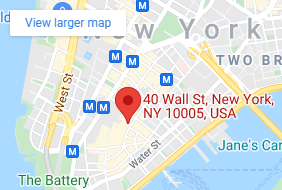$2,500,000 Settlement
In responding to a repair call, a 32 year old operator of a van had to drive over the railroad tracks at a particular crossing. The railroad warning signs were posted on a curved portion of the roadway with a line of sight that was obscured by tall trees between the point where the curve began, up to the railroad crossing itself. As the van entered the crossing, a moving train struck it broadside, dragging it several hundred feet before the train could come to a stop. The driver was killed instantly. We were later retained by his estate, (his widow and a young child).
In the action we brought against the railroad and the town, the defense was that the railroad engineer followed all standards (sounding his horn, etc.), his speed was within legal limits, and that the van driver failed to obey the flashing lights at the roadway warning posted on the roadway. The town defended that its signal and its road warnings were in full compliance with safety’s standards.
In view of what defendants considered a strong defense, they made no offer to settle, and proceeded to assert their defenses at trial. By contrast, it was our firm position that the town failed to provide a clear line of sight to the van driver by failing to remove the trees (on the land owned by the town) so as to provide a clear view of the railroad crossing at the point in the roadway where the railroad warning signs were posted. In essence we made the same assertions against the railroad charging that it was under a duty to make reasonably certain that there were no obstructions between its road warning signs and the railroad crossing.
To graphically prove our point to the jury, we employed a team of surveyors and artists who, under our instructions and supervision, prepared a series of overlay drawings depicting the obstructed view that the van driver had, and the unobstructed line of sight to the railroad crossing he would have had if the trees had been removed. Despite vigorous objections and oral arguments (the jury was recessed), the trial judge accepted our drawings as fair and accurate representations of the dangerous condition that existed, contrasted with the reasonably safe condition that should have been created by the town and railroad had the trees not obstructed the van driver’s line of sight. The overlay drawings were marked in evidence and later exhibited to the jury.
After three weeks of trial, and just prior to the case being submitted to the jury, a settlement offer of $2,500,000 was accepted. Once again our aggressive and creative prosecution of the case, combined with our long courtroom experience won full justice for a young widow and child.




























